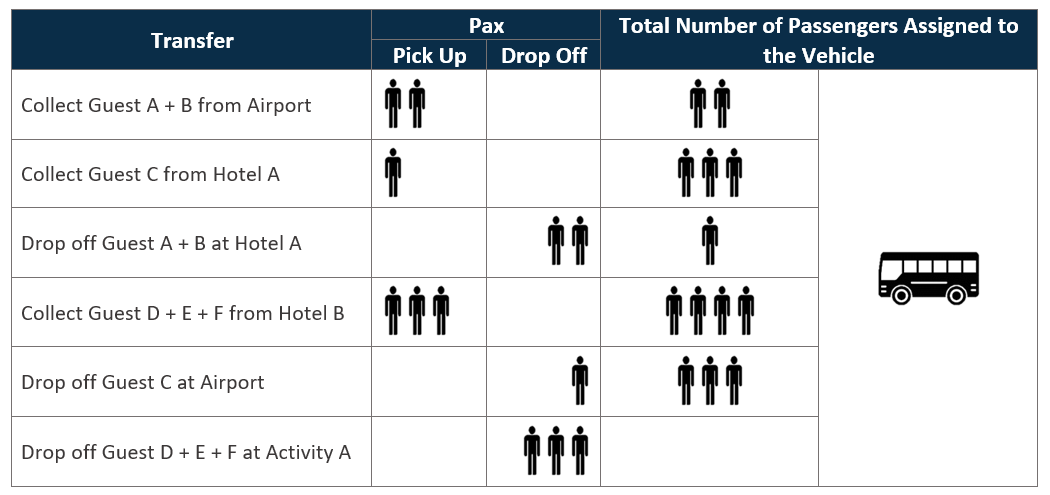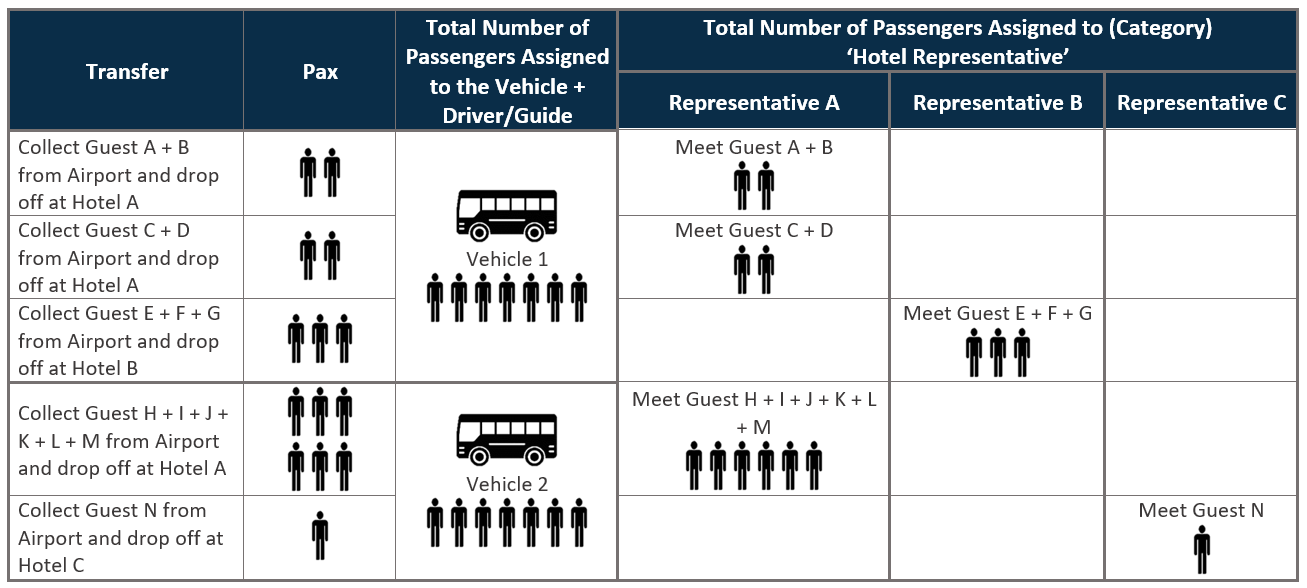There are three resource "types" available and the most common resource descriptions are Vehicles, Drivers and Guides.
Assignments can be:
- Edited and re-assigned where necessary, providing users with the ability to shift services between assignments.
- Reserved 'out of service' if for example a vehicle requires maintenance and cannot be used for a period of time using a reserve resources function.
- Manifests can be printed from within resource assignments, for drivers and/or guides to receive an accurate passenger manifest.
The Resource Assignment application allows organisations to configure the individual set up of assignments to suit specific business operations. The setup requirements are dependant on the organisations resources and services offered.
It's because of the flexibility with assignments that Tourplan provides unique setup options. We define the use of Resource Assignment types as; Single Task, Independent Services, or Hop on Hop off.
An explanation on the different Tourplan definitions of these types of services are provided on the following pages.
If you are unsure on the setup type suited for your organisations operational requirements we suggest contacting your local Tourplan Support Team, or speaking with a member of the Tourplan Training Team who will be able to guide you on the appropriate settings.
Single Task
All services within the assignment are treated as a single task for the resource assigned to them. Any minimum or maximum passenger restrictions will be based on the total number of passengers on the service assigned.
A typical use for this type of assignment would be the consolidation of transfers or sight-seeing services. For example you may have 7 passengers booked across many bookings that require an airport to city transfer. You are providing a single assignment to transfer all passengers. The total sum of all passengers using this assignment will need to fit within the assigned vehicle.

Independent Service
Each service on the assignment is to be operated independently. This type of assignment would be used when you are assigning resources on a daily/weekly basis and each service has a task.
A typical use for this assignment would be groups of passengers where the service of the assignment is to be completed before the next service is started.
For example this assignment is required to complete three tasks:
- Transfer 1: collect 2 passengers from the airport and transfers at Hotel A
- Transfer 2: collect 2 guests from Hotel B and transfer at Airport
- Transfer 3: collect 6 passengers from Hotel C and transfers at Activity A
Each transfer would be completed before collecting the next transfer. Pick-up and drop off times are used for this type of assignment, so that the resource is not double booked.

Hop on Hop off
Multiple services are assigned that may or may not occur simultaneously so you have the situation where Vehicle 1 is assigned to multiple transfers that overlap.
In this example the total passenger count does not exceed 7 as this 'vehicle' assignment has a maximum seat capacity of 7. The assignment collects and drops guests to and from different locations where guests 'hop on and hop off' the same service. Pick up and drop off locations and times are used to effectively manage the resource.

Assignment Maximum Vehicle Capacity is 7
Using Resource Assignment Categories
There is an alternative feature available to organisations who may require a resource assignment to involve more than one category. This is designed for organisations who may have another layer of resources to assign to a group or individual services.
For example; a common scenario is for passengers to be assigned to a particular vehicle, driver and guide for their service. Some organisations may wish to offer another meet and greet service provided by the tour operator, or perhaps a hotel representative is to be assigned on arrival. The traditional method of Resource Assignment setup would not allow two records to be held for one service as required in this situation.
| Type | Definition |
|---|---|
| Using two (or more) categories |
In this example all services within the assignment are treated as a single task. There are two traditional Vehicle + Driver/Guide assignments; two transfer services pick up guest from 5 different bookings and deliver them to their respective hotels. The passengers are assigned to vehicles with a capacity of 7 seats and a passenger manifest would be available for the driver/guide to operate these transfer services. There is also a hotel representative for each hotel who needs to meet with their respective passengers on arrival. Representative A has 10 passengers to meet and requires their own manifest from multiple transfer arrivals. Given that there is a requirement for two resource assignments to be allocated simultaneously, an additional category is created in system setup to cater for this occurrence.
|
